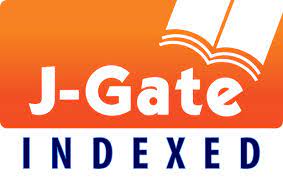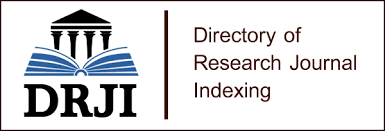FACTORS INFLUENCING PROSPECTIVE TEACHERS IN THEIR SELECTION OF TEACHING AS A CAREER: A STUDY ON EDUCATION STUDENTS AT IIUM
Abstract
Teaching is a profession which provides teachers with many opportunities to interact with children or adults. This research aimed at exploring the most essential factors that influence teachers in pursuing teaching as a career. Furthermore, the study has aimed at raising prospective teachers’ awareness that as future facilitators they will have a great impact on other individuals in setting teaching as their career path. To fulfill the aim of the study, the researcher has adopted a quantitative research method. A questionnaire survey technique was used as a means of gathering data. The study was conducted among prospective teachers seeking their career path at the Faculty of Education at the International Islamic University Malaysia. Previous studies have suggested three main factors that might influence prospective teachers’ decision to choose teaching as a career, namely extrinsic, intrinsic, and altruistic. The impact of these three factors on IIUM prospective teachers’ career choice was investigated in the present study. The findings have showed that the altruistic factors had the greatest effect on IIUM prospective teachers’ career path. Moreover, apart from altruistic factors, the study revealed that intrinsic factors also significantly influenced IIUM prospective teachers’ career choice. However, extrinsic factors were found to be the least influential factors in choosing teaching as a career. This study will provide awareness among prospective teachers as well as students who will help the other individuals to choose their career in teaching profession.
References
Atkinson, J,W.(1957). Motivational determinants of risk-taking of behavior. Psychological Review, 64,359-372
Best, J. W., & Kahn, J. V. (1993). Research in education. Boston: Allyn and Bacon.
Bell, B. (2003). Lessons in lifemanship: Choosing a vocation. Source: http://www.bbll.com/ch28.html. Retrieved on 23/3/2012
Bong, M. (2001). Role of self-efficacy and task-value in predicting college students’ course performance and future enrollment intentions. Contemporary Educational Psychology, 26, 553- 570.
Brookhart, S. M. and Freeman, D. J. (1992) Characteristics of entering teacher candidates. Review of Educational Research, 62, 1, 37-60.
Calderhead, J. (1996). Teachers: Beliefs and Knowledge. In D.C. Berliner, & R.C. Calfee (Eds.), Handbook of Educational Psychology (pp. 709-725). New York: Macmillan.
Chambers, D. (2002). The real world and the classroom: Second – career teachers. The clearing House, 75(4), 212 – 217.
Clinton, P (1998) - Achieving Excellence in the Teaching Profession: Promising Practices: New Ways to Improve Teacher Quality.
Crow, G. M., Levine, L., & Nager, N. (1990). No more business as usual:Career changers who become teachers. AmericanJournal of Education, 98, 197–223.
Czubaj, C.A. (1996). Maintaining Teacher Motivation. Education, 116(3), 372- 378.
Darling-Hammond, L. & Sykes, G. (2003). Wanted: A national teacher supply policy foreducation; the right way to meet the "Highly Qualified Teacher" challenge. EducationPolicy Analysis Archives, 11(33), 233-238.
Eccles (Parsons), J., Adler, T. F., Futterman, R., Goff, S. B., Kaczala, C. M., Meece, J. L., et al. (1983). Expectancies, values, and academic behaviors. In J. T. Spence (Ed.), Achievement and achievement motivation (pp. 75-146). San Francisco, CA: W.H. Freeman.
Eccles (Parsons), J. S. (1984). Sex differences in mathematics participation. In M. W. Steinkamp & M. L. Maehr (Eds.), Advances in motivation and achievement (Vol. 2: Women in science, pp. 93-137). Greenwich, CT: JAI Press.
Eccles, J. S. (1985). A model of student enrolment decisions. Educational Studies in Mathematics, 16, 311-314.
Eccles, J. S., Adler, T. F., & Meece, J. L. (1984). Sex differences in achievement: A test of alternate theories. Journal of Personality and Social Psychology, 46, 26-43.
Eccles, J.S. (2005). Subjective task value and the Eccles et.al. model of achievement related choices. In A.J.Elliot& C.S.Dweck (Eds), Hnadbook of competence and motivation ( pp.105-121). New York.
Edmonds, S., Sharp, C., & Benefield, P. (2002, February). Recruitment to and retention on initial teacher training: A systematic review. Slough, Berkshire: National Foundation for Educational Research.
Farkus, S., Johnson, J., & Faleno, T. (2000). A sense of calling: Who teaches and why. AReport from Public Agenda. New York:Public Agenda.
Flores, B.B. (2001). Bilingual Education Teachers’ Beliefs and Their Relation to Self-reported Practices. Bilingual Research Journal, 25(3), 275-299.
George, D., & Mallery, P. (2008). SPSS for Windows: Step by step (8th ed.). Boston: Pearson.
Georg, Louis, and Tharasabapathy, (2011), “Work Motivation of Teacher: Relationship with Organizational Commitment†Canadian Social Science.
Gordon, J. A. (2000). Asian American resistance to selecting teaching as a career: The power of community and tradition. Teachers College Record, 20, 173–196.
Halawa, I.(2008). Factors influencing teachers’ attitudes towards teaching. University of Sharja Journal for Humanities and Social Sciences, Vol. 5, No. 1, 1-17.
Hanushek, Eric A. & Pace, Richard R.,(1995). "Who chooses to teach (and why)?," Economics of Education Review, Elsevier, vol. 14(2), p 101-117, June.
Hoffman, N. (1981). Women's "true" profession: Voices from the history of teaching. Old Westerbury, NY: The Feminist Press.
Hussey, Jill and Hussey, Roger, (1997). Business Research. A Practical Guide for Undergraduate and Postgraduate Students, Palgrave: Basingstoke.
Jarvis, J., & Woodrow, D. (2005). Reasons for choosing a teacher training course . Research in Education, 73, 29-35.
Kohl, H. (1984). Growing minds. New York: Harper & Row
Kwok-wai Chan. (2004). In-service teachers’ perceptions of teaching as a career – Motives and commitment in teaching .
Kyriacou, C., Hultgren, A., & Stephens, P. (1999). Student teacher motivation to become asecondary school teacher in England and Norway. Teacher Development, 3 (3), 373-381
Kyriacou, C., & Coulthard, M. (2000). Undergraduates’ Views of Teaching as a Career Choice. Journal of Education for Teaching, 26(2), 117-126.
Lehman, R.S. (1995). Statistics in the behavioral Sciences: A conceptual Introduction. Pacific Grove, CA: Brooks/Colle.
Lortie, D. C. (1975). Schoolteacher: A sociological study. Chicago: University of Chicago Press.
Meece, J. L., Eccles (Parsons), J. S., Kaczala, C., Goff, S. B., & Futterman, R. (1982). Sex differences in math achievement: Toward a model of academic choice. Psychological Bulletin, 91, 324-348.
Moran, A., Kilpatrick, R., Abbott, L., Dallatt, J., & McClune, B. (2001). Training to teach:Motivating factors and implications for recruitment. Evaluation & Research in Education, 15(1), 17–32.
Obinaju, Q. (1996). Gender issues in teaching as a profession. In E.N. Okpara (ed.) Gender issues in education and development: (vol. 8, pp.204-212).
Papanastasiou, C., & Papanastasiou, E. (1997). What influences students to choose the elementary education major: The case of Cyprus. Mediterranean Journal of EducationalStudies 3, 35–45.
Reeve, J. (2001). Understanding motivation and emotion (3rd ed.). New York: Wiley & Sons.
Reid, I., & Caudwell, J. (1997). Why did secondary PGCE students choose teaching as a career? Research in Education, 58, 46-58.
Reif, M. T., & Warring, D.F. (2002). Why teach: A comparative analysis of responses from prospective teachers enrolled in professional education program in 1991-92 with those in 2000-01. University of Saint Thomas. Retrieved from ERIC database. (ED 464068)
Richardson, V. (1996). The Role of Attitudes and Beliefs in Learning to Teach. In J. Sikula (Ed.). Handbook of Research on Teacher Education, (2nd ed., pp. 102-119). New York: Macmillan.
Richardson, W. & Watt, H. (2005).†I’ve decided to become a teacherâ€: Influences on careerchange. Teaching and Teacher Education, 21 (5), 475-489.
Rowsey, R.E. and Terry C. Ley. (1986). Perceptions of Teachers' Salaries and Non-salary Benefits.j. Teach Ed. 37(2): 42-45.
Saban, A. (2003). A Turkish profile of prospective elementary school teachers and their views of teaching, Teaching and Teacher Education 19, 829-846.
Sarason, S. B. (1993). You are thinking of teaching? Opportunities, problems, Realities. San Francisco, California.
Sekeran, U. (2000). Research Methods for Business: A Skill-Building Approach. Third Edition, Joh Wiley & Sons, Inc.
Sinclair, C. (2008). Initial and changing student teacher motivation and commitment to teaching, Asia-Pacific Journal of Teacher Education 36.2, 79-104.
Sykes, G. (1983). Public policy and the problem of teacher quality: The need for screens and magnets. In L. S. Shulman & G. Sykes (Eds.), Handbook of teching and policy (pp. 97-125). New York, NY: Longman.
Wigfield, A., & Eccles, J. S. (2000). Expectancy-value theory of achievement motivation. Contemporary Educational Psychology, 25, 68-81.
Wiersma, W. 1986. Research Methods in Education: An Introduction. Newton: Allyn and Bacon.
Yong, C.S. (1995). Teacher trainees’ motives for entering into a teaching career in Brunei Darussalam. Teaching and Teacher education, 11(3), 275-80.
Young, B. (1995). Career plans and work perceptions of preservice teachers. Teaching and Teacher Education, 11(3), 281-292.
Zikmund, W.G. (2000). Exploring Marketing Research, 7th Edition, Dryden Press, Fort Worth.
Published
How to Cite
Issue
Section
License
Copyrights for articles published in Journal of Asian and African Social Science and Humanities are retained by the authors, with first publication rights granted to the journal. The journal/publisher is not responsible for subsequent uses of the work. It is the author's responsibility to bring an infringement action if so desired by the author.
Articles published in Journal of Asian and African Social Science and Humanities are published under the Creative Commons Attribution (CC-BY) license, which permits others to distribute, remix, tweak, and build upon your work as long as they credit you for the original creation.
Â














